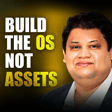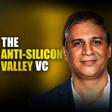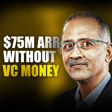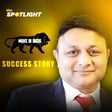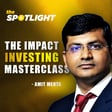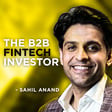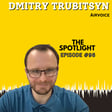
Building a 400cr+ Waste Empire | Dhruv Luthra (Luthra Group)
"Waste is the resource which is in the wrong place."
This powerful statement from Dhruv Luthra encapsulates the core philosophy driving the Luthra Group. It’s a paradigm shift from viewing waste as a problem to seeing it as an opportunity – a valuable raw material waiting to be transformed. This mindset has propelled the Luthra Group to the forefront of India's sustainability sector.
Dhruv Luthra is the Managing Director of the Luthra Group, a third-generation entrepreneur who has been instrumental in steering the family's legacy from its origins in textiles to becoming a pioneering force in hazardous waste management and sustainable energy solutions across India. Under his leadership, the group operates 11 plants, processes around 1100 tons of waste daily in its key recycling facilities, and has played a pivotal role in significant environmental achievements, including saving over 1.8 Lac ML of landfill waste and recycling 12 Lac Tonnes of Greenhouse Gases. The Luthra Group, which started its waste management journey in 1999 as arguably India's first private company in the sector, has seen remarkable growth, with an asset value growth from under Rs. 10 crores to over Rs. 400 crores over a 25-year period.
Key Insights from the Conversation:
👉The Genesis of Circular Economy: Understand that the "new age jargon" of Circular Economy is fundamentally the trusted "Reduce, Reuse, Recycle" principle, applied innovatively.
👉From Textiles to Transformation: Learn about the Luthra Group's strategic pivot from a successful textile business to tackling India's pressing waste management challenges.
👉Waste as a Valuable Resource: Discover how industrial waste, from textile effluents to hazardous materials, is not just managed but converted into valuable products.
👉Innovation in Action: Get a glimpse into the "recipes" and processes involved in treating and converting diverse waste streams, including solidification of semi-solid waste.
👉Scaling Sustainably: Insights into expanding operations across multiple states, the importance of being close to the source of waste, and the critical role of managing supply chain costs.
👉Technology as an Enabler: How the Luthra Group leverages technology like SAP for ERP, and is implementing advanced systems like Automatic Storage and Retrieval Systems (ASRS) to enhance efficiency and safety.
👉The Hard Decisions: The rationale behind exiting the decades-old family textile business to focus entirely on the burgeoning field of environmental solutions.
#CircularEconomy #WasteManagement #Sustainability #Entrepreneurship #StartupIndia #MakeInIndia #GreenTech #Innovation #WasteToEnergy #HazardousWaste #Recycling #IndianBusiness #FamilyBusiness #EnvironmentalSolutions #ClimateAction #FounderThesis
Disclaimer: The views expressed are those of the speaker, not necessarily the channel.
